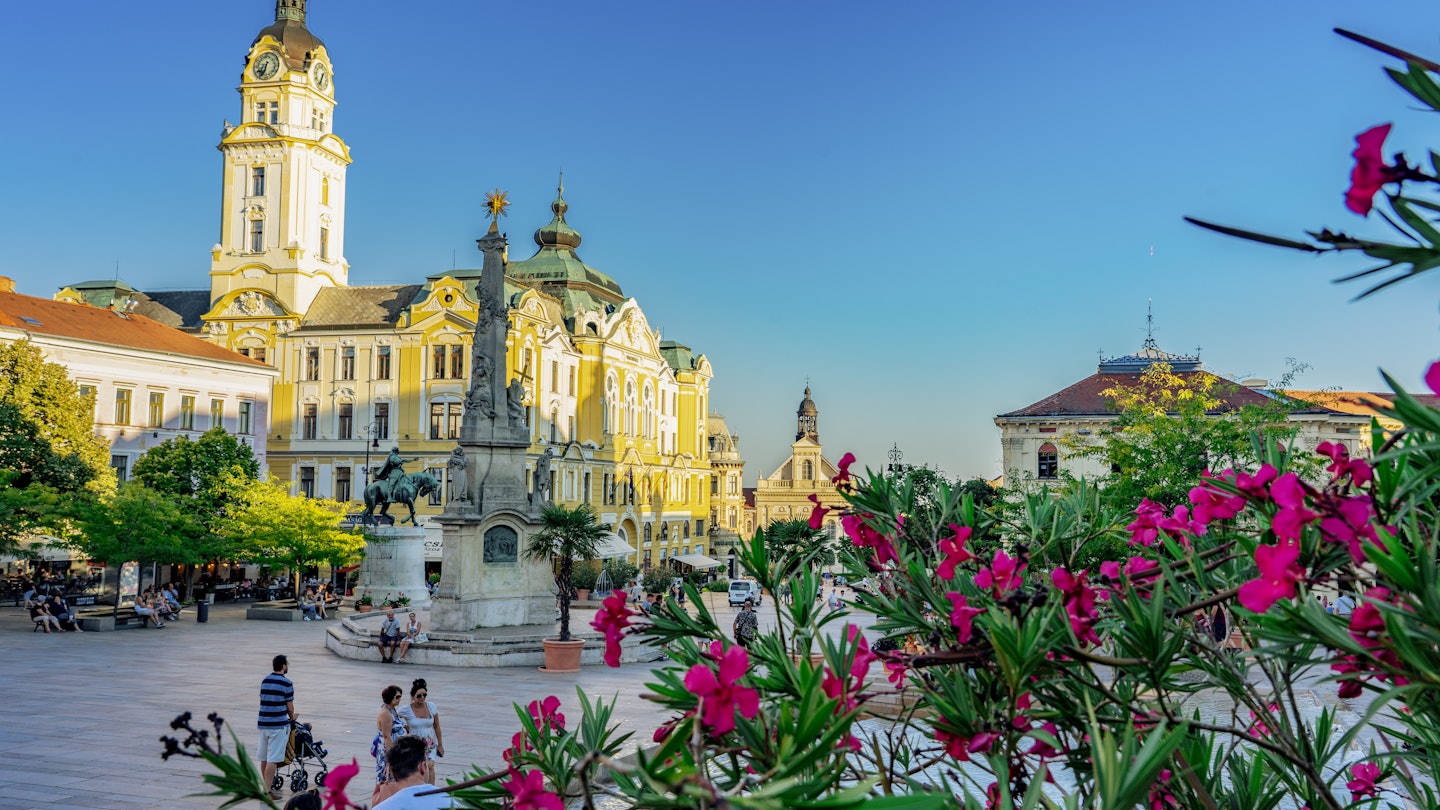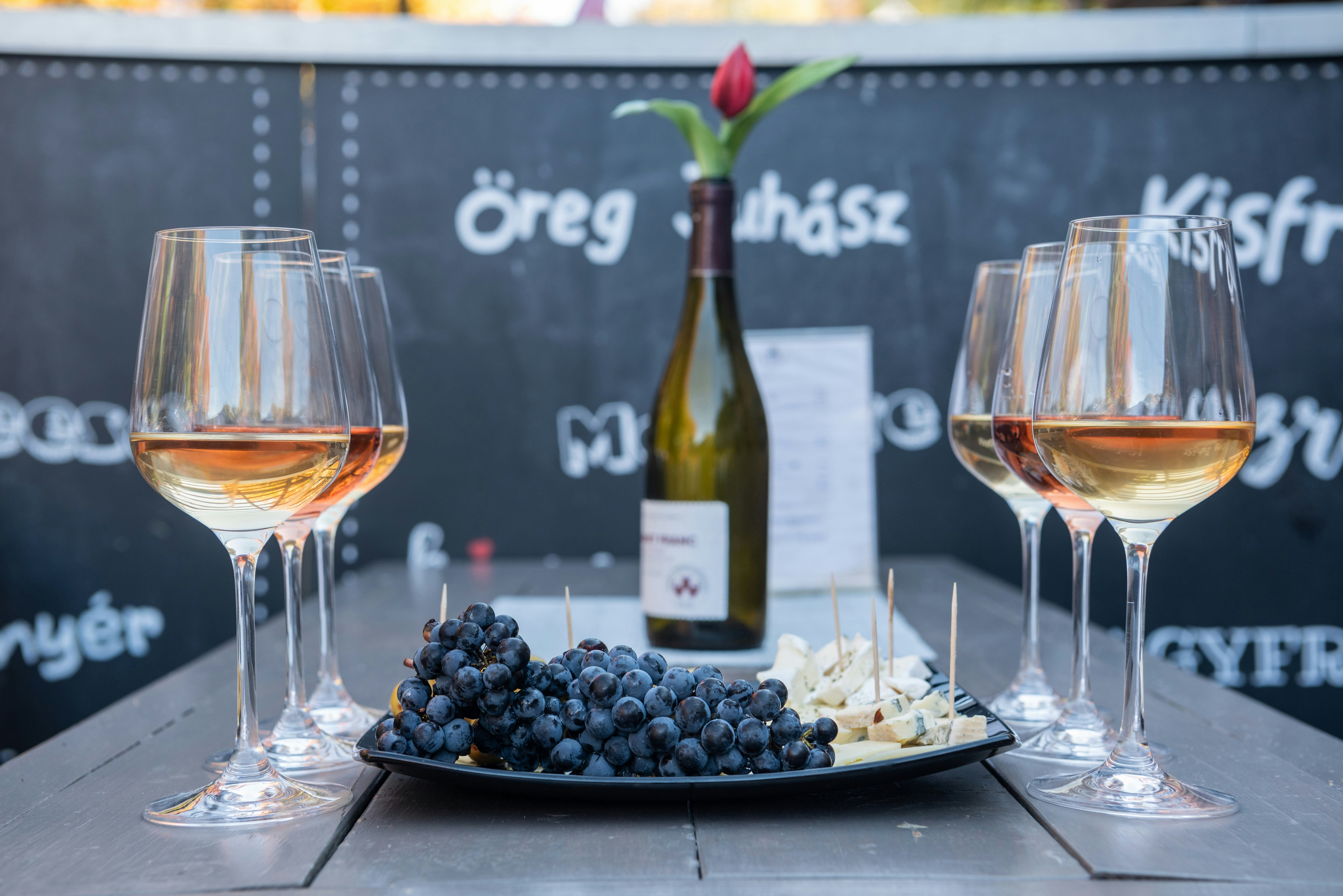

Pécs is a lovable college town that promises a refreshing, eclectic mix of wine-tasting, art and Hungarian history. Shutterstock
Though Budapest is a superstar city on most travelers’ bucket lists, Hungary has many other attractions worth exploring, including world-famous wine regions, lovely lakes, UNESCO-listed sights and historic towns.
Traveling around the country is easy and affordable, and Hungary is also a manageable size, with most inland journeys from Budapest taking about a couple of hours. Trains take you pretty much anywhere; buses take care of the rest, while sailing up the Danube Bend or cycling are fun ways to get around. Driving is only necessary if you’re planning to see the country's remote corners. If you want to travel around extensively, consider a Hungary pass, which provides unlimited public transport within the country.
Without much further ado, here are the top 10 places to visit that capture the essence of my home country.
1. Budapest
Best for historic thermal spas, scenic beauty and nightlife
No trip to Hungary would be complete without exploring its gorgeous capital, which is also most visitors’ entry point to the country. Divided by the majestic Danube River, Budapest offers two distinct experiences: Buda is the greener and more tranquil side with historic sights like the Royal Palace, Matthias Church, Gellért Baths and Fishermen’s Bastion and great hikes through the Buda Hills. While Pest is more lively, offering equally splendid attractions such as the Parliament, St Stephen’s Basilica or City Park, alongside unique ruin pubs, historic coffee houses and rooftop bars. Margaret Island, with its medieval ruins, a rose garden and Japanese garden is a popular recreational spot with locals, while Óbuda maintains its village-like atmosphere and is home to the Roman ruins of Aquincum.
Planning tip: Though its name suggests it’s ‘just’ a park, Budapest’s City Park has enough heavyweight sights to fill at least half or even a full day, including Széchenyi Baths, Vajdahunyad Castle, the enormous Budapest Zoo and excellent museums like the House of Music and the Museum of Fine Arts.

2. The Danube Bend
Best for hikes and views
Located just north of Budapest, the Danube Bend is a scenic section of the Danube that winds its way through wooded hills and historic towns. Popular stops include artsy Szentendre, known for its galleries, museums and churches; Esztergom home to Hungary’s largest church; and historic Visegrád, home to one of the most prominent and photographed spots in the Danube Bend, the Citadel. The area offers opportunities for hiking, river cruises and exploring Hungary’s natural landscapes, and its close proximity to Budapest makes it a convenient day trip destination.
Local tip: Starting from Dömös near Visegrád, you can hike up in a few hours to the Prédikálószék lookout tower that provides the most dazzling view of the Danube Bend.
3. Gödöllő
Best for royal history
Easily accessible from Budapest on the H8 HÉV suburban train, Gödöllő is another excellent day trip destination. Its main drawcard is the Gödöllő Royal Palace, Hungary’s largest Baroque manor house and the former favorite summer residence of the country’s Queen Elizabeth (Sisi). Visitors can explore the palace’s 34 beautifully restored rooms and gardens, offering a glimpse into royal life, while the surrounding town offers a quieter and more relaxed alternative to Budapest, giving visitors a glimpse into Hungarian life outside of the buzzy capital.
4. Eger
Best for trying Hungary’s revered 'Bull’s Blood' wine
Characterized by gorgeous Baroque buildings and a hilltop castle with a heroic history, Eger is a jewelry box of a town with much to see and do. The main attraction is the castle rising above the town, which was where brave Hungarians famously temporarily halted the Ottomans advancing into the country in the 16th century. Though Eger was eventually conquered alongside the rest of Hungary, which is why you can still climb the minaret or soak away in the warm waters of the Turkish Bath. The town is flanked by two of northern Hungary’s most beautiful ranges of hills (Bükk and Mátra) and is the home of amazing wine, most notably the celebrated full-bodied Bull’s Blood.
Local tip: Hop on the ‘Dottika Eger’ mini-train at the main square for the 15-minute ride – or just walk – to the charming Valley of the Beautiful Women, where you can wander from cellar to cellar and sample local wines.

5. Bükk National Park
Best for hikes and nature
Eger is a convenient gateway to Bükk National Park, a haven for nature lovers with its diverse birdlife, limestone caves, forested trails and panoramic viewpoints. Popular attractions within the park include Szalajka Valley near Szilvásvárad, where visitors can hike to a waterfall, explore a cave or ride the old-timey narrow-gauge railway. Nearby Lillafüred near Miskolc, centered around a forest-fringed lake, offers boat rides, walking paths and the Renaissance-era Palace Hotel.
Detour: Between Miskolc and Lillafüred lies the Miskolctapoca Cave Bath, a spa complex set up in a natural cave – though at the time of writing it is temporarily closed due to a fire, so check the website before you go.
6. Hollókő
Best for traditional folk culture
Hollókő, a UNESCO World Heritage site in Northern Hungary, is celebrated for its preserved folk architecture and traditions. Home to the ethnic Palóc people, the Old Village is characterized by cobblestoned streets lined by whitewashed houses with carved wooden porches. Visitors can purchase a Village Walk Ticket from the Küszöb Information Office to gain access to several attractions, including Hollókő Castle, and local wine and cheese samples.
Local tip: Visit in March or April to witness Hungary’s unique Easter traditions and traditional Palóc folk performances in action.
7. Tokaj-Hegyalja
Best for local wines
Tokaj-Hegyalja – declared a Unesco World Heritage Site in 2002 – is Hungary's top wine tourism destination. The region is spread over a romantic landscape of cellars, vineyards and slopes at the foothills of the Zemplén Mountains and is made up of 27 villages. The most famous variety produced here is the honey-sweet Aszú, which was called the ’Wine of Kings, King of Wines’ by Louis XV of France and even features in the Hungarian National Anthem. The best place to start exploring the area is Tokaj, a picturesque little town cradled by two rivers with old buildings, nesting storks and vineries galore. The most magical village to visit is Hercegkút, whose wine cellars resemble Hobbit houses.
Planning tip: The Tourinform office (located at Serház utca 1 in Tokaj) offers customized ‘wine bus’ tours that take you on a tasting session at three wineries – minimum two people, book about a week in advance.

8. Lake Balaton & Hévíz
Best for lakeside wellness retreats
Central Europe’s biggest lake, or the ‘Hungarian sea’, is where the Magyars (Hungarians) flock to spend their summer holidays. During the dog days, the beaches are packed with people swimming, playing, SUPing (stand-up paddleboarding) and boating. In winter when the lake freezes over it turns into a huge ice-skating rink. The shoreline is dotted with picture-perfect marinas, tiny villages and lovely vineyards. The water on the southern shore is shallower, perfect for family fun, while the northern shore is where the best wineries and hikes are. Balatonfüred, the oldest resort on the lake, and Tihany, which hosts the fragrant Tihany Lavender Festival in early July, are popular spots with most travelers. The village of Keszthely is good for families, while Siófok is great for a party or night out.
Detour: Nearby Hévíz is home to the world’s largest swimmable thermal lake. The water temperature there averages 91°F (33°C) and never drops below 71°F (22°C), even in winter, surrounded by fir trees.
9. The Great Plain
Best for rural traditions and small town charm
The Great Plain (Nagyalföld) spans nearly half of Hungary, a region of sweeping grasslands and rural towns. At its heart lies Hortobágy National Park, showcasing traditional Hungarian shepherding culture and horse shows. Here, you can visit authentic shepherd huts or walk across the nine-arched bridge, Hungary's longest stone bridge. Bugac in the Kiskunság National Park, is another great spot where you can see traditional Hungarian herding culture in action. The Bugac Pustza features walking trails and a museum on shepherding.
The region is also home to fabulous cities that are far from 'plain.’ Dynamic Debrecen is Hungary’s second-largest city with a rich history and culture, a great launchpad for exploring Hortobágy National Park. Only an hour away from Budapest lies cute Kecskemét, famous for its fiery apricot pálinka (fruit brandy) and Art Nouveau town center. Another hour away, you find lovely Szeged, a culture-filled city on the Tisza River famous for its food like paprika spice, Pick salami and must-try fish soup.
10. Pécs
Best for a city break
The most recommended city break in Hungary is lively Pécs for its cool university-town vibe, mild climate and interesting museums. Pécs is blessed with rarities like the Ottoman-built Mosque of Pasha Qasim, the largest Ottoman structure still standing in Hungary, and a nearby landmark, a Roman cemetery dating from the 4th century in the Early Christian Necropolis. The town's true highlight is the Zsolnay Cultural Quarter, a museum complex on the grounds of the original world-famous 1853 Zsolnay porcelain factory. A prominent Hungarian wine-making village, Villány is nearby, known for its robust reds.














